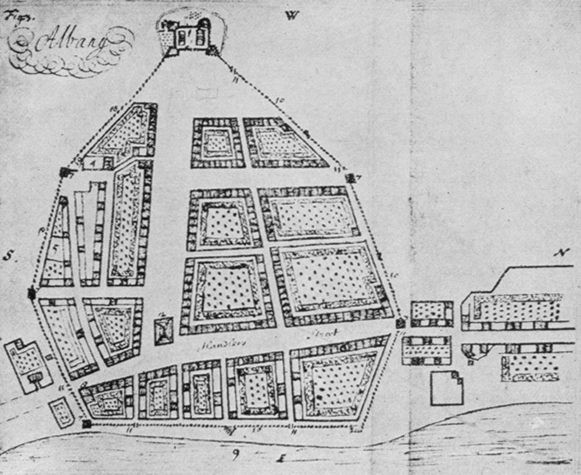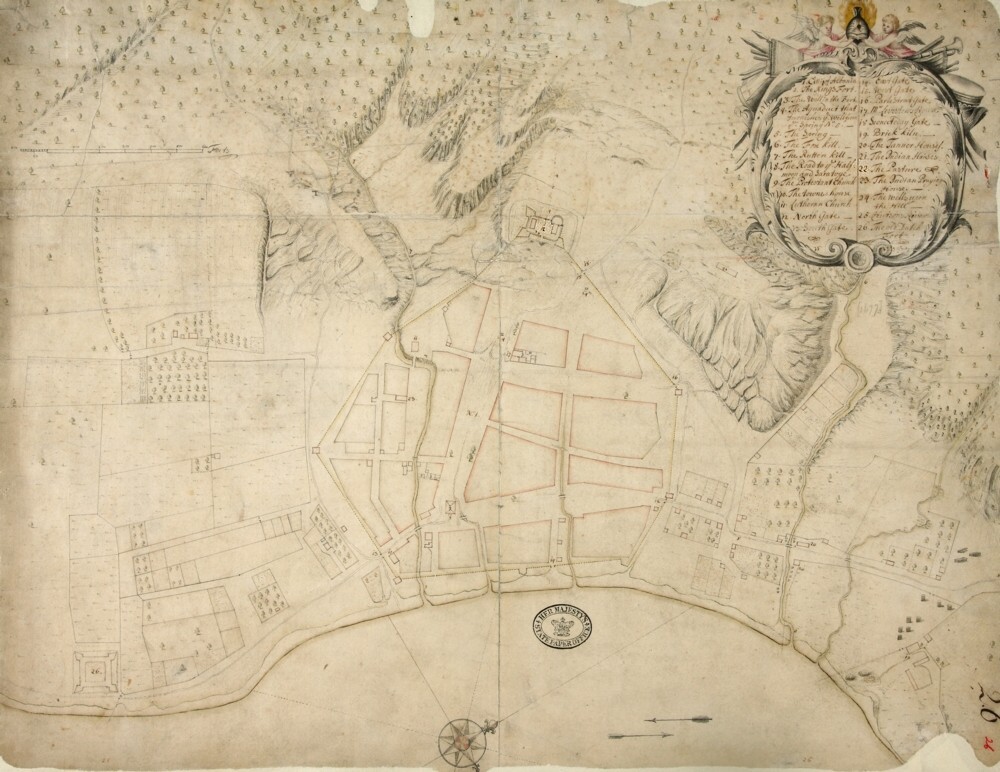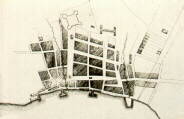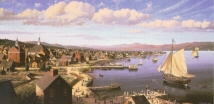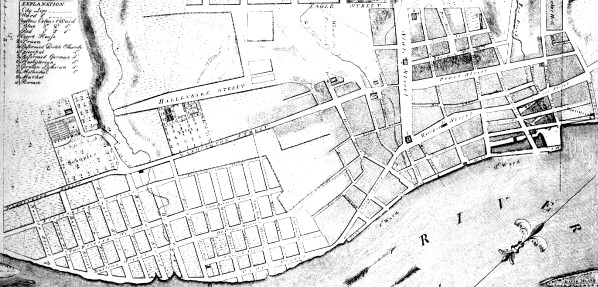
In early America, not even a dozen population centers were known as cities. But even the largest of them were much smaller than the cities today. The center piece image shown below depicts the city of Albany in the year of its chartering and is the central visual resource of the model community history program known as the Colonial Albany Social History Project. Within what is now New York State, the first city to be so designated was New York City, which received a royal charter in April 1686. Albany, with a population of about 500 people (one-fourth the size of New York City at the time), was granted a municipal charter by Governor Thomas Dongan three months later on July 22, 1686. The so-called Dongan Charter incorporated Albany, fixed its boundaries, set up a municipal government, and endowed the city corporation with a number of special rights and privileges. Albany's essential nature was commercial. Initially, the community economy was based on a fur trade with Native American peoples. But by 1686, Albany was evolving into a place where regional farmers bartered their crops and forest products for imported and locally crafted items; where they came to have tools and other things repaired; and where they found spiritual and legal guidance and services. By that time, city people had begun to divide into business, production, and service enterprises - although many early Albanians engaged in some of all three activities. The Dongan Charter contained a number of provisions that further enhanced Albany's status and the English fort provided the community with its first great government enterprise. The fledgling community granted a city charter in 1686 was in reality a town of about 120 buildings - clustered together city-style and encircled by a tall, wooden stockade. Seventeenth century Albany had four principal public buildings. The city hall was located near the water on Court Street; the Dutch Reformed Church set in the middle of the city's main intersection; a smaller Lutheran Church which often was without a pastor; and a more imposing wooden fort located up the hillside and overlooking the community. By that time, Fort Orange, the trading enterprise of the Dutch founders, had been long abandoned and its remains were eroded by the spring overflow of the Hudson River. In 1686, most of the people of greater Albany County lived within a clear day's sight of the flagpole at Albany's fort. Population center, entrepôt, service provider, and the only safe place on the northern frontier, Albany had emerged as the focal point of settlement in the upriver region of New York. With that political, social, and economic base in place, Albany would continue to grow and develop over the next century. The principal new factor in that development would be the influx of newcomers chiefly from the British isles as those new settlers brought English ways into traditional Dutch American households. In colonial North America, urban or "pre-urban" population centers were Philadelphia, New York, Boston, Quebec, Charleston, Newport, and then Albany. In 1786, Albany was the sixth largest city in the United States. The American City: In modern terms (and undefinitively of course), a city is a place where a large number of different people associate themselves to live together, provide life services, and generate useful products. City people are joined together in a community of interest. Although proximity and self-sufficiency are much less essential than in the past, today most Americans live in or near a city. In New York State, sixty-two communities of interest are officially chartered cities.
first posted 1999; last revised 9/1/16 |

